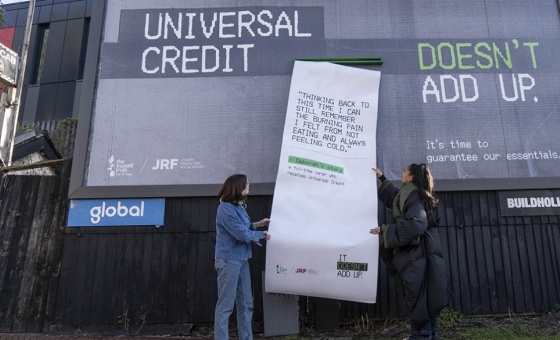This is the last article you can read this month
You can read more article this month
You can read more articles this month
Sorry your limit is up for this month
Reset on:
Please help support the Morning Star by subscribing here
Tomorrow, Tuesday November 25, the Marx Memorial Library continues its series of discussions on the lessons of the miners’ strike with John Sheppard, a striking Armthorpe miner
Last week Seumas Milne, speaking on the miners and the state, outlined the unprecedented scale of state mobilisation against the miners and their leadership.
The NUM had no choice but to fight. The viciousness of the British state operation against the NUM was a battle over class and political power whose outcomes still shape British and world history after 30 years.
The government spent the equivalent of £37 billion defeating the miners. Cabinet papers released under the 30-year rule vindicate the NUM leadership’s analysis at the time.
The 1984-5 miners’ strike was engineered by a Tory government that saw the NUM as the backbone of the labour movement.
The NUM’s defeats of the 1972 and 1974 Tory governments led prime minister Edward Heath to call a general election in 1974 under the slogan: “Who runs the country, the government or the unions?”
The electorate gave their verdict, returning a Labour government. The NUM effectively brought down the Tories.
During the next decade the Tory Party’s plans to reshape the British economy in the interests of the capitalist class of necessity had to ensure it would not be defeated by the miners a third time.
In February 1981, Margaret Thatcher’s government ducked confrontation with NUM flying pickets organised by rank-and-file miners.
NUM vice-president Mick McGahey rightly described this as a “body swerve rather than a U-turn.”
From 1979 the Thatcher government planned to defeat the NUM and privatise the coal industry.
The 1980 Coal Industry Act replaced production targets with financial targets that could only be met by closing “uneconomic” collieries.
The Tory Ridley report prepared for the dispute with the miners. Coal stocks and imports increased. Power stations were converted to oil. Transport companies employed non-union drivers. Social security benefits were cut for strikers’ families. Special mobile police squads were created to deal with flying pickets.
In September 1983 Ian MacGregor — noted for his anti-union attitude — was appointed chairman of the National Coal Board (NCB).
MacGregor’s anti-union operation at carmaker British Leyland led to the sacking of Longbridge union convener Derek Robinson.
MacGregor was the architect of slashing jobs at British Steel, culminating in the defeat of the three-month steel strike in 1980.
The 1982 Aslef strike and the 1983 miners’ strikes were dress rehearsals for the 1984-5 miners’ strike.
Tomorrow John Sheppard will speak about how the miners organised and his personal experiences as an activist during the strike at Armthorpe, one of the most active and militant NUM branches in the whole British coalfield.
Like others in the Doncaster coal field, Armthorpe miners were already on strike on March 5 1984 when Yorkshire NUM called the area strike, followed by the nationwide strike call on March 12. A national overtime ban had been on since October 31 1983.
Armthorpe solidly supported the call. In August 1984, when 10 individuals attempted to strikebreak in Armthorpe, the village rose up, was occupied by thousands of police, cordoned off and subjected to siege.
The historic strike ended on May 14 1985 with an organised return to work — without an agreement.
Even after over 13 months on strike, Armthorpe miners’ anger at returning to work while comrades remained dismissed and victimised meant it took a further three days to persuade them. They were the last of the Yorkshire miners to return, on May 17.
At the Marx Memorial Library Sheppard will recall his experiences and draw conclusions from his point of view as a rank-and-file miner active in the strike.
We invite Morning Star readers to join with us listening to Sheppard’s first-hand account and to discuss the lessons of the strike with him and other comrades.
The following week’s meeting will be led by Joyce Sheppard recalling how the women of the mining communities organised to support the union and their striking husbands in the struggle to save British coalmining, their jobs and the social fabric of the mining villages.
John Sheppard will be speaking on “How the strike was organised” Tuesday November 25 at 6.30pm at the Marx Memorial Library, 37a Clerkenwell Green, London EC1R 0DU.







